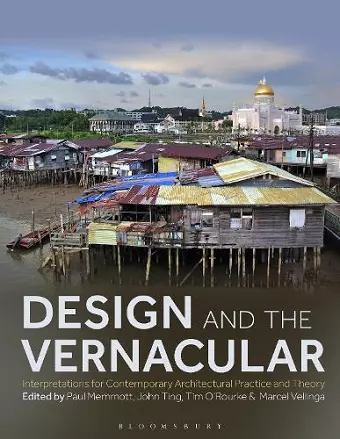Design and the Vernacular
Interpretations for Contemporary Architectural Practice and Theory
John Ting editor Tim O’Rourke editor Paul Memmott editor Professor Marcel Vellinga editor
Format:Hardback
Publisher:Bloomsbury Publishing PLC
Published:28th Dec '23
£100.00
Supplier delay - available to order, but may take longer than usual.

Addresses the relevance and role of vernacular architecture to contemporary urban planning and architectural practice using case studies across Australasia and Oceania.
Design and the Vernacular explores the intersection between vernacular architecture, local cultures, and modernity and globalization, focussing on the vast and diverse global region of Australasia and Oceania. The relevance and role of vernacular architecture in contemporary urban planning and architectural design are examined in the context of rapid political, economic, technological, social and environmental changes, including globalization, exchanges of people, finance, material culture, and digital technologies.
Sixteen chapters by architects designers and theorists, including Indigenous writers, explore key questions about the agency of vernacular architecture in shaping contemporary building and design practice. These questions include: How have Indigenous building traditions shaped modern building practices? What can the study of vernacular architecture contribute to debates about sustainable development? And how has vernacular architecture been used to argue for postcolonial modernisation and nation-building and what has been the effect on heritage and conservation?
Such questions provide valuable case studies and lessons for architecture in other global regions -- and challenge assumptions about vernacular architecture being anachronistic and static, instead demonstrating how it can shape contemporary architecture, nation building and cultural identities.
This is a welcome, timely volume drawing attention to local architectural traditions. Often overlooked, these represent generations of experience of particular places. They feature ingenious, often sustainable, solutions to local conditions. They are versatile and adaptable, and importantly today, they offer many people the scope independently to manage with climate change, being within their control, depending on local knowledge, skills and available materials. * Paul Sillitoe, Durham University, UK *
The book provides objective lessons on the lifestyles and habitation of Indigenous peoples, as these were first transformed by their encounter with colonialism and then by their entry into the technologically and economically globalized world. All this makes for great reading, particularly for those unfamiliar with indigenous habitats in the Pacific region. This is a book that will excite curiosity among architecture students and students of the region, and it is one that deserves to reside in the libraries of architecture schools worldwide. * Traditional Dwellings and Settlements Review *
ISBN: 9781350294301
Dimensions: 256mm x 208mm x 24mm
Weight: 1760g
320 pages